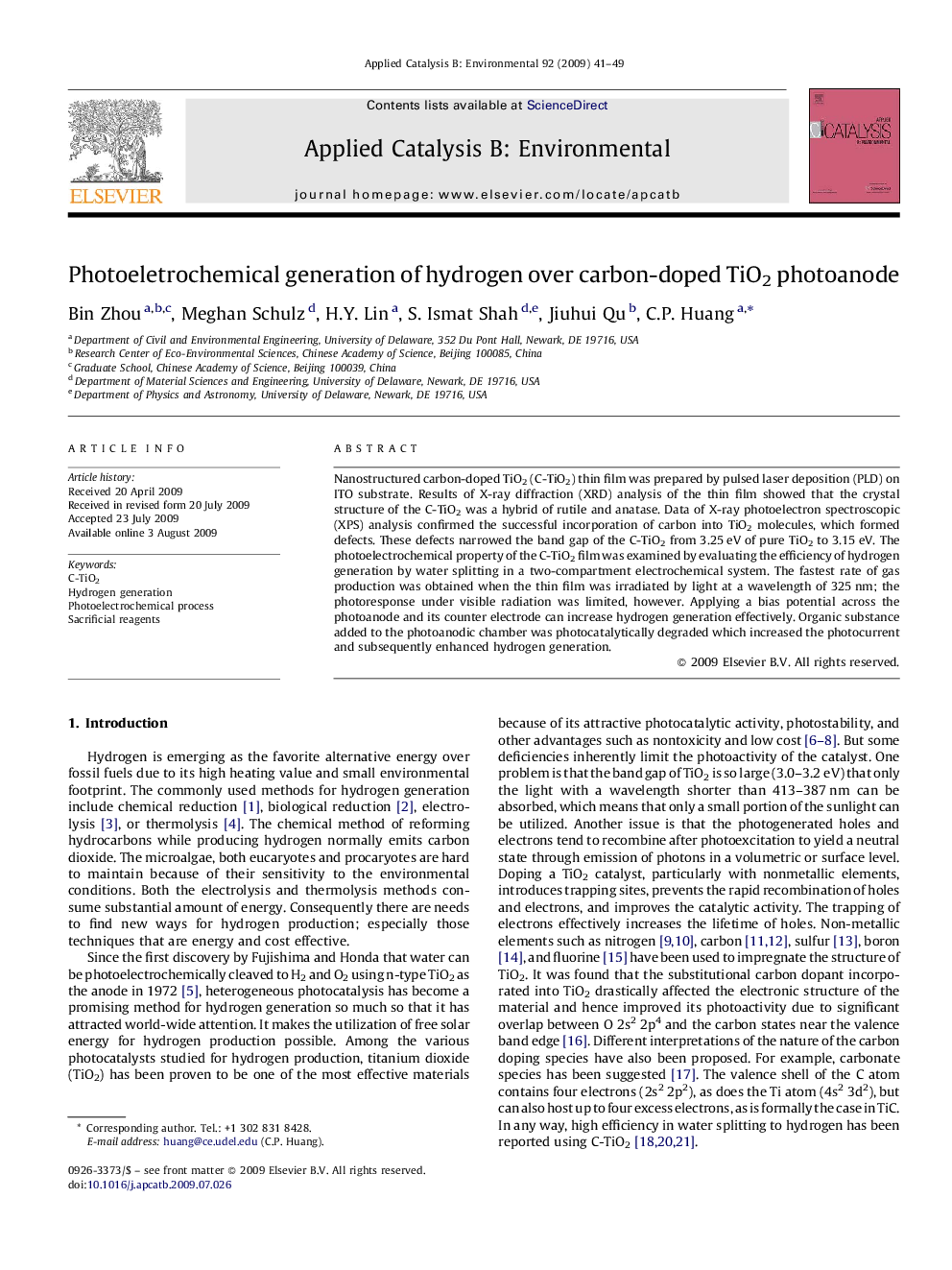| Article ID | Journal | Published Year | Pages | File Type |
|---|---|---|---|---|
| 47512 | Applied Catalysis B: Environmental | 2009 | 9 Pages |
Nanostructured carbon-doped TiO2 (C-TiO2) thin film was prepared by pulsed laser deposition (PLD) on ITO substrate. Results of X-ray diffraction (XRD) analysis of the thin film showed that the crystal structure of the C-TiO2 was a hybrid of rutile and anatase. Data of X-ray photoelectron spectroscopic (XPS) analysis confirmed the successful incorporation of carbon into TiO2 molecules, which formed defects. These defects narrowed the band gap of the C-TiO2 from 3.25 eV of pure TiO2 to 3.15 eV. The photoelectrochemical property of the C-TiO2 film was examined by evaluating the efficiency of hydrogen generation by water splitting in a two-compartment electrochemical system. The fastest rate of gas production was obtained when the thin film was irradiated by light at a wavelength of 325 nm; the photoresponse under visible radiation was limited, however. Applying a bias potential across the photoanode and its counter electrode can increase hydrogen generation effectively. Organic substance added to the photoanodic chamber was photocatalytically degraded which increased the photocurrent and subsequently enhanced hydrogen generation.
